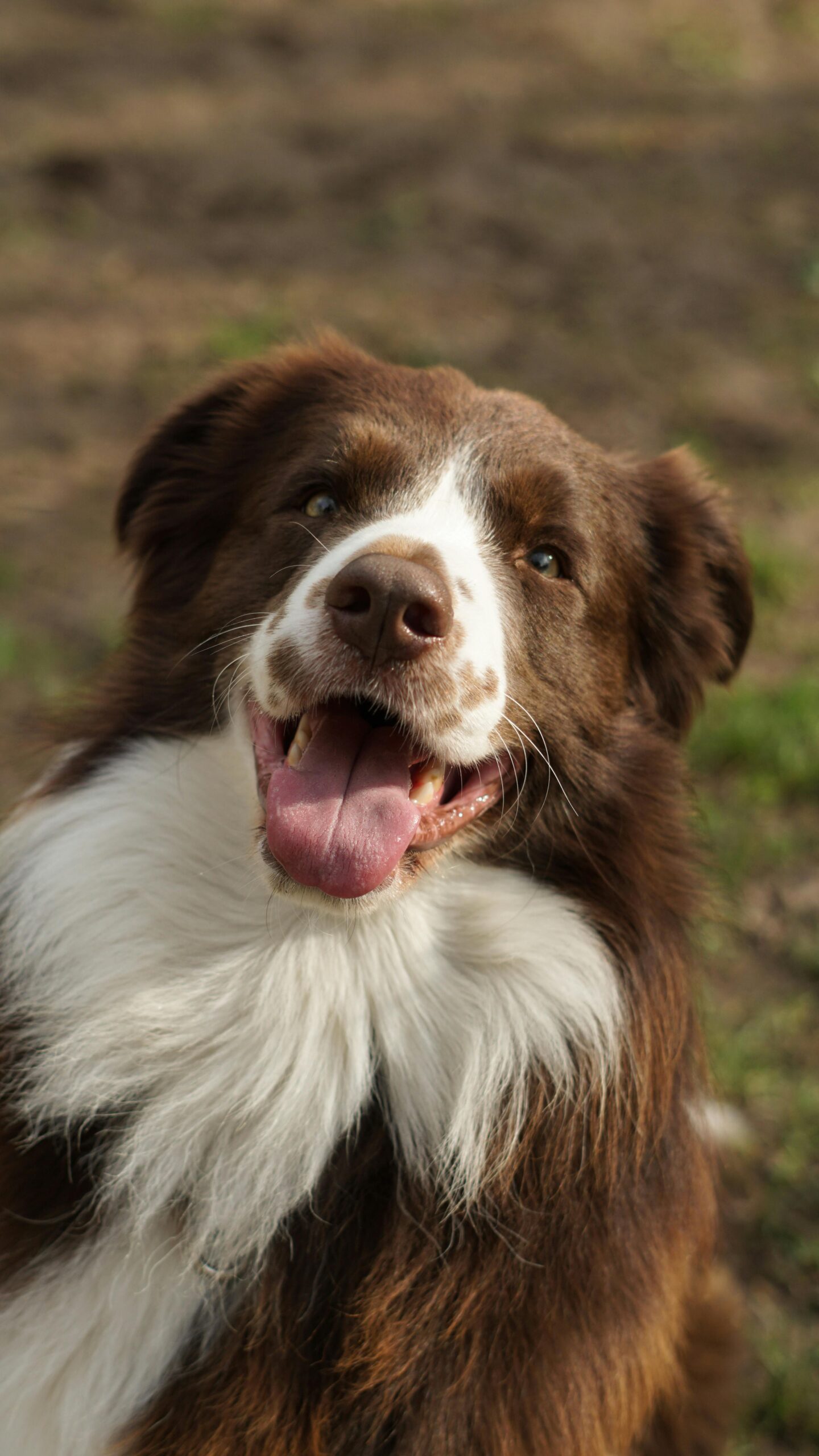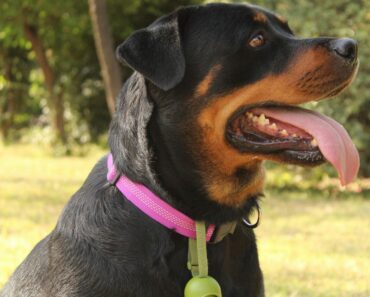The Australian Shepherd, often affectionately called the “Aussie,” is a popular and versatile breed known for its intelligence, energy, and strong work ethic. Despite its name, the breed was actually developed in the United States, primarily for herding livestock. Over the years, Australian Shepherds have become beloved companions, excelling in various roles, from working on farms to participating in dog sports and serving as therapy dogs. This comprehensive guide will explore the breed’s history, characteristics, temperament, care requirements, and suitability for different types of households.

1. History of the Australian Shepherd
Despite its name, the Australian Shepherd was developed in the United States during the 19th century. The breed’s ancestors were likely a mix of various herding dogs brought to America by European immigrants, including Collies and other similar breeds. These dogs were particularly valued by Basque shepherds, who arrived in the United States from Australia, hence the breed’s misleading name.
Australian Shepherds were bred for their herding abilities, intelligence, and agility. They became especially popular in the American West, where they were used to herd livestock, particularly sheep. The breed’s versatility and work ethic made them invaluable to ranchers and farmers.
In the 20th century, Australian Shepherds gained recognition in the show ring, as well as in various dog sports. The breed was officially recognized by the American Kennel Club (AKC) in 1991. Today, Aussies are not only working dogs but also beloved companions and participants in dog sports such as agility, obedience, and herding trials.
2. Physical Characteristics
Australian Shepherds are medium-sized dogs with a well-balanced and muscular build. They are known for their striking appearance, with a coat that comes in a variety of colors and patterns.
- Size: Male Australian Shepherds typically stand between 20 to 23 inches tall at the shoulder, while females are slightly smaller, ranging from 18 to 21 inches. Males usually weigh between 50 to 65 pounds, and females weigh between 40 to 55 pounds.
- Coat: The breed has a medium-length double coat that is weather-resistant. The outer coat is straight or wavy, while the undercoat is soft and dense. Common coat colors include blue merle, red merle, black, and red, often with white markings and tan points.
- Eyes: One of the most distinctive features of the Australian Shepherd is its eyes, which can be brown, blue, amber, or even a combination of these colors (heterochromia). Some Aussies have striking marbled or “split” eyes.
- Tail: Many Australian Shepherds are born with naturally bobbed tails, though others may have long tails that are sometimes docked in countries where the practice is legal.
Table 1: Physical Characteristics of the Australian Shepherd
| Characteristic | Description |
|---|---|
| Size (Male) | 20-23 inches tall, 50-65 pounds |
| Size (Female) | 18-21 inches tall, 40-55 pounds |
| Coat Type | Medium-length, double coat |
| Common Colors | Blue merle, red merle, black, red |
| Eye Color | Brown, blue, amber, or a combination |
| Tail | Naturally bobbed or long (sometimes docked) |

3. Temperament and Personality
Australian Shepherds are known for their intelligence, energy, and strong work ethic. They are highly trainable and eager to please, making them excellent working dogs and companions.
- Intelligence: Aussies are one of the most intelligent dog breeds, ranking high in obedience and working intelligence. They are quick learners and excel in training, often mastering new commands and tasks with ease.
- Energy Level: This breed is incredibly energetic and requires ample physical and mental stimulation. Aussies are not couch potatoes; they thrive in active households where they can participate in various activities, such as hiking, running, or playing fetch.
- Loyalty and Bonding: Australian Shepherds are loyal and form strong bonds with their families. They are protective of their loved ones and can be wary of strangers, making them excellent watchdogs.
- Socialization: Proper socialization from a young age is crucial for Australian Shepherds. They need to be exposed to different people, animals, and environments to prevent them from becoming overly shy or aggressive.
- Work Drive: Aussies have a strong work drive and are happiest when they have a job to do. Whether it’s herding livestock, participating in dog sports, or even learning tricks, they thrive on mental and physical challenges.
4. Training and Socialization
Training an Australian Shepherd is both rewarding and essential. Due to their intelligence and eagerness to please, Aussies excel in training sessions, but they can also be stubborn if not properly guided.
- Early Training: Start training as early as possible, ideally when the puppy is around 8 to 10 weeks old. Early training helps establish good habits and prevents behavioral issues.
- Positive Reinforcement: Use positive reinforcement techniques such as treats, praise, and play to motivate your Aussie. Harsh training methods can lead to fear and aggression, which is counterproductive for this sensitive breed.
- Socialization: Expose your Australian Shepherd to a variety of experiences, including meeting new people, encountering different animals, and exploring various environments. This helps them become well-rounded and confident adults.
- Obedience Training: Basic obedience training is essential for every Aussie. Commands such as “sit,” “stay,” “come,” and “heel” should be mastered early on. Advanced obedience training can further challenge their minds and strengthen the bond between dog and owner.
- Mental Stimulation: Due to their high intelligence, Australian Shepherds need mental stimulation to prevent boredom. Puzzle toys, interactive games, and advanced training exercises can keep their minds sharp and engaged.
Table 2: Key Aspects of Training and Socialization
| Aspect | Importance | Techniques |
|---|---|---|
| Early Training | Establishes good habits, prevents issues | Start at 8-10 weeks old |
| Positive Reinforcement | Encourages desired behaviors, builds trust | Treats, praise, play |
| Socialization | Prevents fear, aggression, promotes confidence | Exposure to people, animals, environments |
| Obedience Training | Ensures control, strengthens bond | Basic and advanced commands |
| Mental Stimulation | Prevents boredom, promotes problem-solving | Puzzle toys, interactive games, advanced tasks |
5. Exercise and Activity Needs
Australian Shepherds are a high-energy breed that requires regular and rigorous exercise. Without adequate physical and mental activity, they can become bored and develop destructive behaviors.
- Daily Exercise: Aussies need at least one to two hours of exercise each day. This can include walks, runs, playtime in a fenced yard, or participation in dog sports.
- Mental Stimulation: In addition to physical exercise, Australian Shepherds need mental challenges. Activities like obedience training, agility courses, and puzzle toys can help keep their minds engaged.
- Dog Sports: Australian Shepherds excel in dog sports such as agility, flyball, herding trials, and obedience competitions. These activities not only provide physical exercise but also satisfy their need for mental stimulation and work.
- Off-Leash Play: If you have a safe, enclosed area, allow your Aussie to play off-leash. This gives them the freedom to run and explore, which is essential for their well-being.
- Hiking and Outdoor Adventures: Australian Shepherds make excellent companions for outdoor activities like hiking, camping, and even swimming. They enjoy being active and exploring new environments.
6. Health and Common Issues
Australian Shepherds are generally healthy dogs, but like all breeds, they are prone to certain health conditions. Responsible breeding practices and regular veterinary care are essential to ensure the health and longevity of your Aussie.
- Hip Dysplasia: This is a common condition in many dog breeds, including Australian Shepherds. Hip dysplasia occurs when the hip joint doesn’t fit properly into the hip socket, leading to pain and mobility issues. Responsible breeders test their dogs for hip dysplasia to reduce the risk in their offspring.
- Eye Conditions: Australian Shepherds are prone to several eye conditions, including cataracts, progressive retinal atrophy (PRA), and collie eye anomaly (CEA). Regular eye exams are crucial for early detection and management of these conditions.
- Epilepsy: Some Australian Shepherds may develop epilepsy, a neurological disorder that causes seizures. While epilepsy is often manageable with medication, it requires ongoing veterinary care.
- Allergies: Aussies can be prone to allergies, which may manifest as skin issues, itching, or gastrointestinal problems. Identifying and avoiding allergens, as well as working with a veterinarian, can help manage these issues.
- Drug Sensitivity: Australian Shepherds can be sensitive to certain medications, particularly those in the ivermectin family, which are commonly used to treat parasites. This sensitivity is due to a genetic mutation known as the MDR1 gene. It’s important to test your Aussie for this mutation and consult with your vet before administering any medication.
7. Grooming and Maintenance
Australian Shepherds have a beautiful, medium-length double coat that requires regular grooming to keep it healthy and looking its best.
- Brushing: Aussies should be brushed at least once a week to remove loose hair and prevent matting. During shedding seasons (spring and fall), more frequent brushing may be necessary to manage the shedding.
- Bathing: Australian Shepherds do not require frequent baths, but they should be bathed as needed, especially if they get dirty or start to smell. Use a dog-specific shampoo to avoid drying out their skin and coat.
- Ear Care: Regularly check your Aussie’s ears for signs of infection, such as redness, swelling, or a foul odor. Clean their ears with a veterinarian-recommended solution to prevent infections.
- Dental Care: Good dental hygiene is essential for your Australian Shepherd’s overall health. Brush their teeth regularly with a dog-specific toothpaste and provide dental chews to help keep their teeth clean.
- Nail Trimming: Trim your Aussie’s nails regularly to prevent them from becoming too long and causing discomfort or injury. If you’re not comfortable trimming their nails yourself, a professional groomer or veterinarian can help.
8. Australian Shepherd in Dog Sports
Australian Shepherds are highly versatile dogs that excel in a variety of dog sports. Their intelligence, agility, and work drive make them ideal candidates for many competitive activities.
- Agility: Aussies are known for their agility and speed, making them top contenders in agility competitions. These events involve navigating a course of obstacles, including jumps, tunnels, and weave poles, in the fastest time possible.
- Obedience: Australian Shepherds excel in obedience trials, where they demonstrate their ability to follow commands with precision and accuracy. These competitions test a dog’s training and responsiveness to their handler’s commands.
- Herding Trials: As a herding breed, Australian Shepherds naturally excel in herding trials, where they demonstrate their ability to control livestock. These events mimic real-life herding scenarios and showcase the breed’s natural instincts and skills.
- Flyball: Flyball is a fast-paced relay race where teams of dogs race over hurdles to retrieve a ball and return it to their handler. Australian Shepherds’ speed and enthusiasm make them strong competitors in this sport.
- Disc Dog: Also known as Frisbee dog, this sport involves dogs catching discs thrown by their handlers. Australian Shepherds’ agility and ability to jump high make them excellent participants in disc dog competitions.
9. Suitability for Different Households
Australian Shepherds are best suited for active households where they can receive the physical and mental stimulation they need. While they can adapt to various living situations, including apartments, they thrive in homes with access to a yard and plenty of opportunities for exercise.
- Active Families: Aussies are ideal for active families who enjoy outdoor activities such as hiking, running, and playing sports. They are excellent companions for individuals or families who can keep up with their energy levels.
- Experienced Dog Owners: Due to their intelligence and strong work drive, Australian Shepherds are best suited for experienced dog owners who can provide consistent training, socialization, and leadership.
- Households with Children: Australian Shepherds can be great with children, especially if they are raised with them. However, due to their herding instincts, they may try to herd young children by nipping at their heels. Supervision and training are important to prevent this behavior.
- Homes with Other Pets: Aussies can get along well with other pets, especially if they are socialized from a young age. However, their herding instincts may cause them to try to herd other animals, so proper introductions and supervision are necessary.
- Rural and Suburban Settings: Australian Shepherds are well-suited for rural and suburban settings where they have plenty of space to run and play. They can adapt to city living if they receive enough exercise and mental stimulation.
Table 3: Suitability of Australian Shepherds for Different Households
| Household Type | Suitability | Considerations |
|---|---|---|
| Active Families | Excellent | Requires regular exercise and activities |
| Experienced Owners | Ideal | Needs consistent training and leadership |
| Households with Children | Good | May try to herd children, supervision needed |
| Homes with Other Pets | Good | Proper socialization and supervision required |
| Rural/Suburban Settings | Excellent | Thrives with space to run and play |
10. Conclusion
The Australian Shepherd is a remarkable breed known for its intelligence, energy, and versatility. Whether you’re looking for a working dog, a sports companion, or a loyal family pet, the Aussie can excel in any role with the right training and care. However, this breed is not for everyone. Potential owners must be prepared to meet the Australian Shepherd’s exercise and mental stimulation needs to keep them happy and healthy. With the right environment and commitment, an Australian Shepherd can bring endless joy, loyalty, and companionship to your life.






